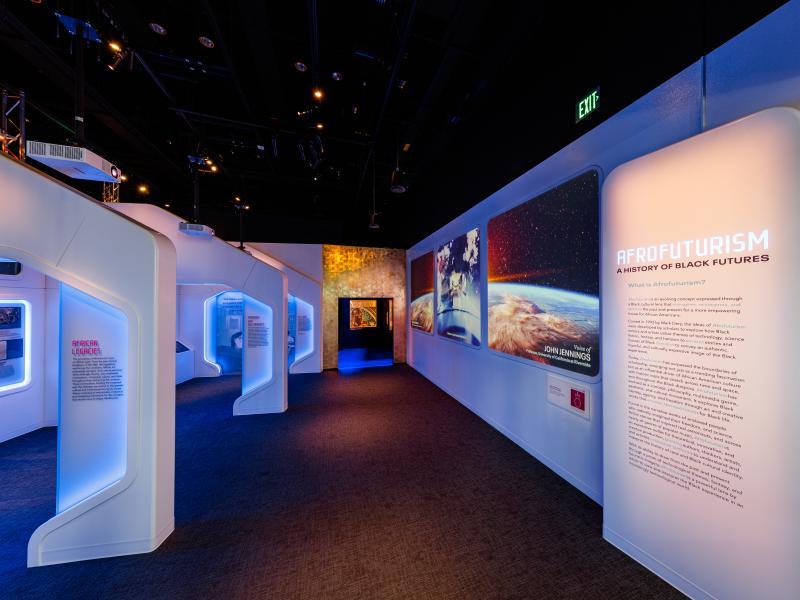In case you’ve gone through every Smithsonian exhibit and are in need of another, look no further than the Smithsonian National Museum of African American History and Culture and the Smithsonian Air and Space Museum’s newest joint exhibit: “Afrofuturism: A History of Black Futures.”
The exhibit explores the idea of Afrofuturism and its place within African American history and pop culture.
“Afrofuturism expresses notions of Black identity, agency and freedom through art, creative works and activism that envision liberated futures for Black life,” the Smithsonian website reads.
The term Afrofuturism was coined by critic Mark Dery in his 1993 essay “Black to the Future.” Today, Afrofuturism refers to a more general art that is influenced by the Black experience, but particularly that featuring futuristic or science fiction-esque themes.
The exhibit, which spans over 4,000 square feet, contains over 100 artifacts examining the influence of Afrofuturism through Black art and innovation throughout history, including the late Chadwick Boseman’s suit from “Black Panther” and memorabilia from Michael Jackson’s “Scream” music video.
The three-part exhibit begins with “The History of Black Futures,” which dives into the origins of Afrofuturism. This section revolves around the idea that the enslaved would look to space and the beyond for hope and features artwork and historical artifacts including naturalist, astronomer and mathematician Benjamin Banneker’s almanac and minister, bishop and educator Richard Allen’s money box.
The second part, “New Black Futures,” delves into modern Afrofuturism from the 20th century till now, featuring the thinkers who contributed to the genre and modern art that contributed to the study and body of Afrofuturism.
The exhibit ends with “Infinite Possibilities,” a section that ties space together with liberation in a look at how Black art has created a vision of a world of true freedom.
Within these larger sections, the exhibit has more specific focuses; one of the most expensive focuses is “Music and Afrofuturism,” a collection of musical artifacts from Michael Jackson’s “Scream” chair to wigs worn by George Clinton. This section also has screens constantly playing music videos of Afrofuturism as visitors walk around.
One of the exhibit’s most prominent displays is the “Black Panther” suit worn by Boseman. The suit represents one of the most recent breakdowns of Black stereotypes in mainstream film and an example of Afrofuturism in a major motion picture.
Other entertainment artifacts showcased in the exhibit include André De Shields’ jumpsuit from “The Wiz” on Broadway, guitarist and songwriter Vernon Reid’s guitar, and the costume worn by Nichelle Nichols as Lt. Nyota Uhura in “Star Trek” — the first Black woman in a non-domestic lead role in “Star Trek.” These displays take visitors through the history of Black media, portraying the historical context and future impact of each piece of art.
The exhibit also features a tribute to the Black Lives Matter Movement through a display on the use of cell phones to capture racial injustices. Titled “Black Bodies, Black Lives,” the section highlights police brutality against Black Americans.
Another section features the flight suit Trayvon Martin, whom a neighborhood watchman murdered when Martin was just 17 years old, wore when he attended Experience Aviation, a program designed to build young interest in STEM.
Throughout the entire exhibit, various displays tie much of modern injustice to the progress that has been made from previous injustices, reminding visitors that the context from which Afrofuturism was built on is not gone and that Afrofuturism continues to contribute to the idea of a world away from the modern struggles Black Americans face.
The exhibit will run until March 24, 2024, and requires a pass reservation prior to visiting. With so much rich history and culture to explore, the museum offers sample routes to take based on the amount of time you plan to spend at the museum in order to experience as much as possible. On your next free break from studying, hop on the metro and immerse yourself in this vast exhibit of history.














